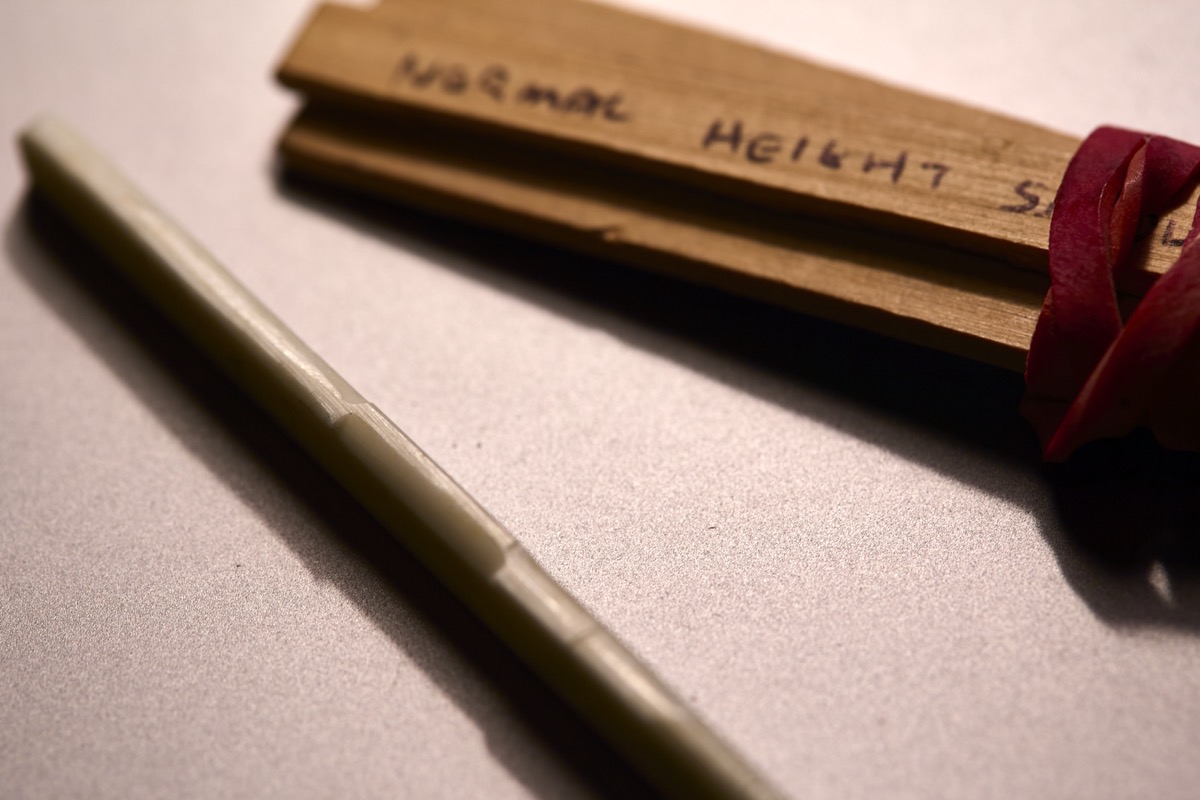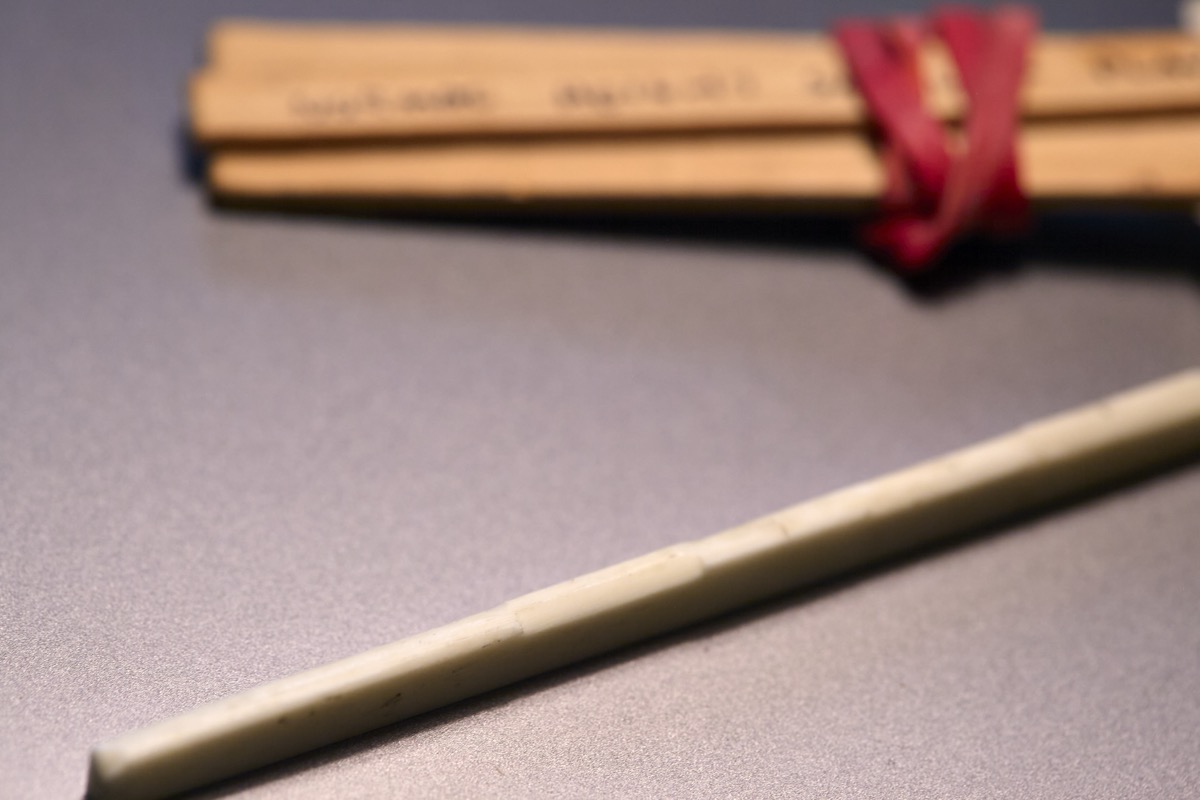


This is a saddle. The strings run over the saddle and are tied behind the bridge. The saddle is carved from a piece of bone. As you can see, there is a small section that is carved differently, so that one particular string has a slightly longer length that can vibrate than the other five strings. That’s for the G-string.
I had been using a particular bone for many years when Keith Vizcarra, the luthier, looked at my guitar a while ago and suggested that we lower the strings ever so slightly. In order to do that he carved a new bone.
Fast forward to the Florida tour two months ago. Florida was plenty humid and the A on the 1st string, and a few other notes, started to buzz. Thinking ahead to the concert with the NM Phil I thought I should switch back to the older saddle that would certainly eliminate the buzz, because it is higher.
I took the strings off, removed the newer, lower bone and replaced it with the older, taller bone, and strung up the guitar with a new set of strings. I gave myself a few days to get used to the new, old setup.
I discovered that I couldn’t get used to it. It felt difficult to play. The difference between the saddles could not have been more a fraction of a millimeter (maybe a tenth of a mm?) in height but it therefore also added a tiny bit of tension that I had to overcome when fretting the notes with the left hand.
I decided that this change in playability was more troublesome than the small buzz and decided to change back to the newer/lower saddle. The neck, meanwhile, had started to recover from the humidity and the buzzing note played nearly clean. After I spent almost a week in Santa Fe, the neck was totally fine and the guitar sounded great.
I realized that Keith’s lowering of the guitar’s action had really helped my hands and made it a little easier for me to play.



>I discovered that I couldn’t get used to it. It felt difficult to play. The difference between the saddles could not have been more a fraction of a millimeter (maybe a tenth of a mm?)
This makes sense. The trigonometry would indicate a ~9% increase in height if the saddle height were increased by 0.1mm. You’d be able to tell … definitely.
That will directly impact the tension in the string by just north of 6% for the same pitch on a string with the same length and density. This is just “back of the napkin” estimation stuff. I assumed a 650mm scale length. Shorter scale length will increase the above in proportion. I also assumed 1.14 gm/cm^3 for the density of nylon (which is probably a bit too high – it’s probably more like 1.08gm/cm^3) … anyway … makes total sense to me that it would be too difficult to play.
Thanks for that, Steve. Love your comment. It’s nice to see the evidence for something that I can only feel. I really appreciate it.
Glad to help out.
BTW … with a guitar you are probably near to what can be felt by the small 0,1mm differential of saddle height adjustment. By that I mean had this been an upright with a 1060mm scale length, you’d probably not be able to tell the difference … Same is probably true of a Fender bass at 864mm, but there would also be quite a difference in pitch and string profile. Maybe a baritone guitar would be a better comparison. In any case the differential of what can be discerned (due to trigonometry) drops off A LOT for string lengths much more than 762mm.
Just my €0,02